
Trampolines are a simple invention with the power to enrich the lives of children with autism. For many families with autistic children, a family trampoline has become an essential tool to improve their child’s life. The magic of a trampoline lies in its ability to provide joy, exercise, sensory stimulation and relief from anxiety.
Children with ASD often have difficulty relating to others and the outside world. They frequently experience sensory issues, anxiety and restlessness. Providing enjoyable physical outlets and opportunities for social interaction is vital for their development and wellbeing.
In this article, we’ll explore the science behind why trampolines are so beneficial for autistic children.
Understanding Autism

Autism, or autism spectrum disorder (ASD, refers to a spectrum of conditions marked by difficulties in social interaction, communication, and repetitive behaviours. As the name suggests, autism is a spectrum, meaning that it affects people in different ways and to different degrees. Many autistic children struggle in social situations and have difficulties communicating. They may also have restricted interests, repetitive movements, and sensitivities to certain sounds or textures.
Challenges faced by autistic children in daily life
Daily life for an autistic child can be difficult as the world is often not designed to meet their needs. Simple things like bright lights, loud noises, and crowds can be overwhelming and distressing. Social interactions and relationships may not come naturally, leading to feelings of isolation and anxiety. Many autistic children also have sensory processing issues, meaning that they are either over- or under-sensitive to certain sounds, lights, smells, touches, and movements. This can make seemingly normal activities challenging and exhausting.
Impact on sensory processing and motor skills
For autistic children, sensory and motor skills are closely linked to emotional regulation and daily functioning. When senses become overloaded or under-stimulated, it leads to distress, anxiety, and behavioural issues. Providing sensory stimulation in the form of exercise, vibration, music, and tactile activities can help calm and organise an autistic child. Activities like jumping on a family trampoline, bouncing on an exercise ball, and swinging are all excellent for providing sensory input in a fun, engaging way. They help stimulate the vestibular system which is responsible for balance, spatial awareness, and muscle control. For an autistic child, stimulating this system leads to improved focus, better sleep, decreased anxiety, and an overall sense of wellbeing.
The Therapeutic Potential of a Family Trampoline
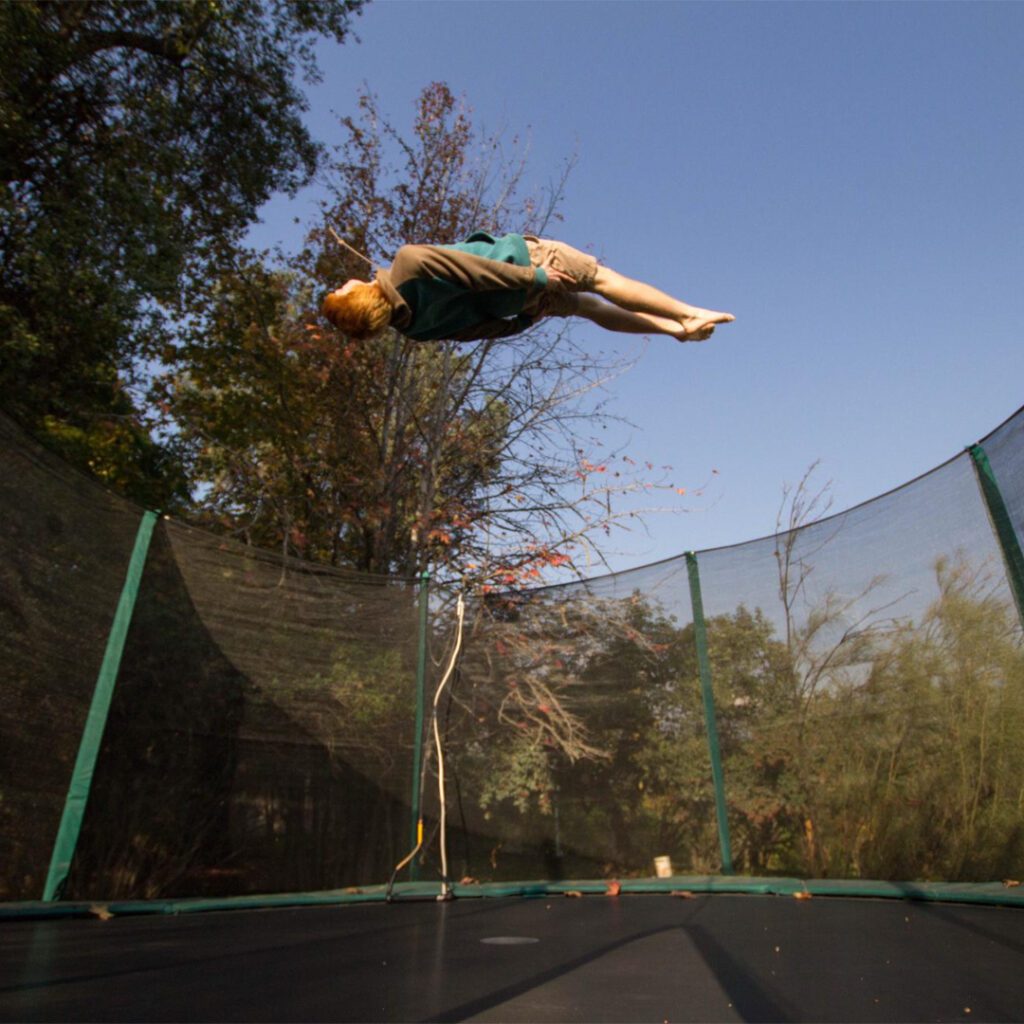
Trampolining is a fun recreational activity, but it also has real therapeutic potential for autistic children. The combination of proprioceptive input, vestibular stimulation and tactile feedback can help satisfy sensory needs, improve motor skills and coordination, enhance body awareness, and promote calmness and better sleep.
Vestibular stimulation
The vestibular system is responsible for sensing motion, balance and spatial orientation. Trampolining stimulates the vestibular system through the rhythmic motion of bouncing up and down. This stimulation can have a calming, organising effect and help reduce anxiety, restlessness and difficulty sleeping in autistic children.
Tactile feedback
The family trampoline bed provides tactile feedback through the sense of touch. The slight roughness and tautness of the mat, along with the compression from each bounce, sends signals to the brain that stimulate the sensory system. The repetitive jumping motion along with the tactile feedback from the trampoline bed has been shown to help reduce stereotypical behaviours and restlessness in autistic children.
Motor skill development through trampoline use
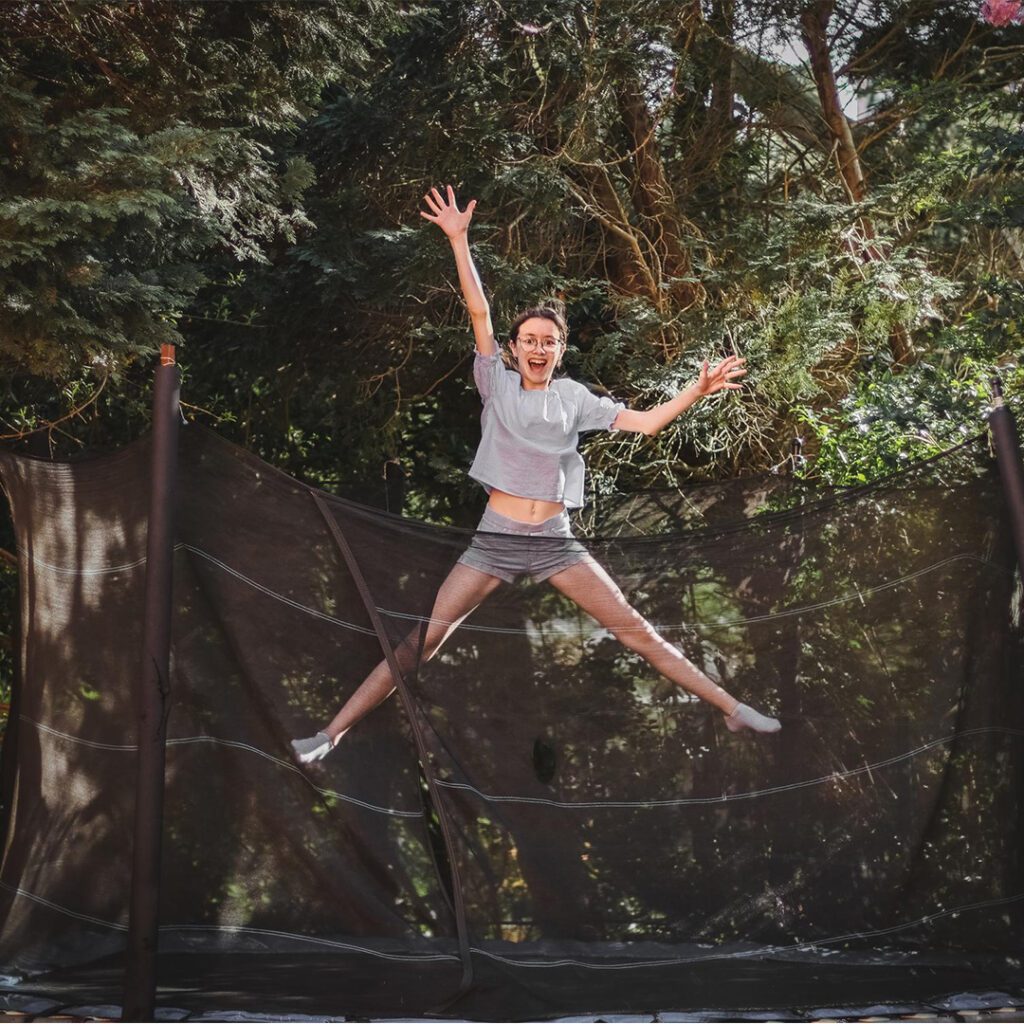
As autistic children jump on a 12ft trampoline, their balance and coordination improve tremendously. The unstable, bouncing surface helps them learn how to control their body movements and stay upright. This boosts their confidence in physical activities and everyday motions. With practice, kids get better at landing, jumping and changing direction or position on the trampoline. All of these skills translate to improved stability, posture and coordination on solid ground as well.
Gross motor skills enhancement
Jumping on a family trampoline helps develop larger muscle groups in autistic children, known as gross motor skills. As kids learn to jump higher, do knee drops or seat drops, tuck jumps or straddle jumps, their leg muscles strengthen and become more responsive. Regular trampolining also helps in improving bone density. Their core muscles also get a workout to help stabilise their body during jumping. Stronger muscles and better motor skills make it easier for children to ride bikes, climb stairs, and play sports.
Muscle strengthening
The up and down motion of bouncing works muscles throughout the body. An autistic child’s leg muscles, core muscles, and glutes all get exercised on a trampoline. As these muscle groups strengthen over time with regular use, it boosts stamina, flexibility and range of motion. Strong muscles also help improve posture, balance and coordination for better performance of daily activities and physical feats. Using a family trampoline, especially under guidance from a physiotherapist, can be very therapeutic for autistic children.
Joyful Play and Emotional Well-being
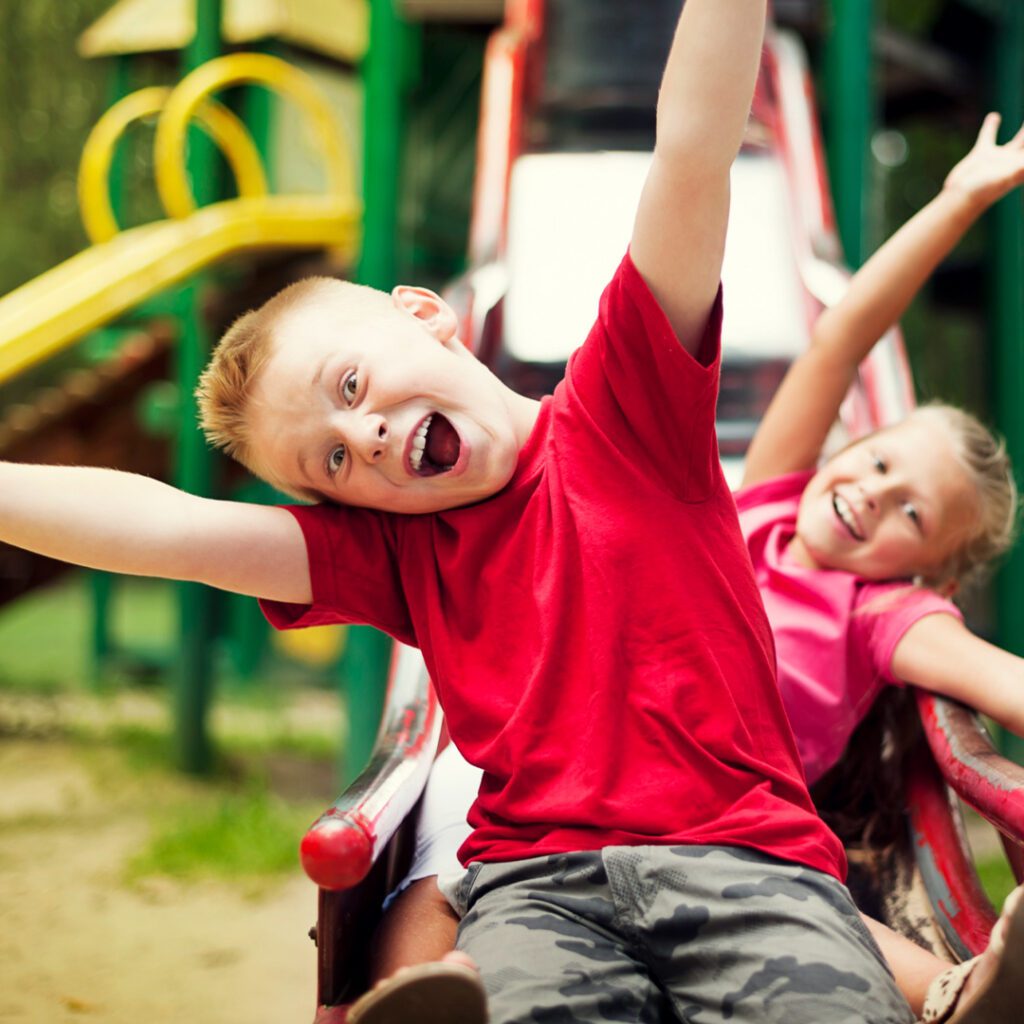
The repetitive bouncing motion has a calming, soothing effect and the safety enclosure net gives a sense of safety. Start with just one child at a time on the trampoline as too much stimulation can be overwhelming. Supervise them closely, especially when first starting out.
Promoting social interaction and communication
Encourage simple games like catch, follow the leader and bouncing in sequences together. This helps with turn-taking, sharing space and bonding over a fun activity. Family trampoline can also be used on special occasions. Even just engaging in conversation while bouncing or making eye contact and exchanging smiles with another child is progress. Start with short 5-10 minute sessions and provide lots of praise for their efforts.
Boosting self-esteem and confidence
Mastering new skills on the trampoline leads to a sense of accomplishment in autistic children. Simple moves like bounces, knee drops and seat drops become more coordinated over time. Learn how to properly spot children as they gain confidence and want to try more advanced skills. Provide lots of positive reinforcement for their achievements to build self-esteem in a supportive environment. Over time, the increased physical activity and mastery of skills can lead to better sleep, appetite and mood regulation.
Practical Tips for Trampoline Use with Autistic Children
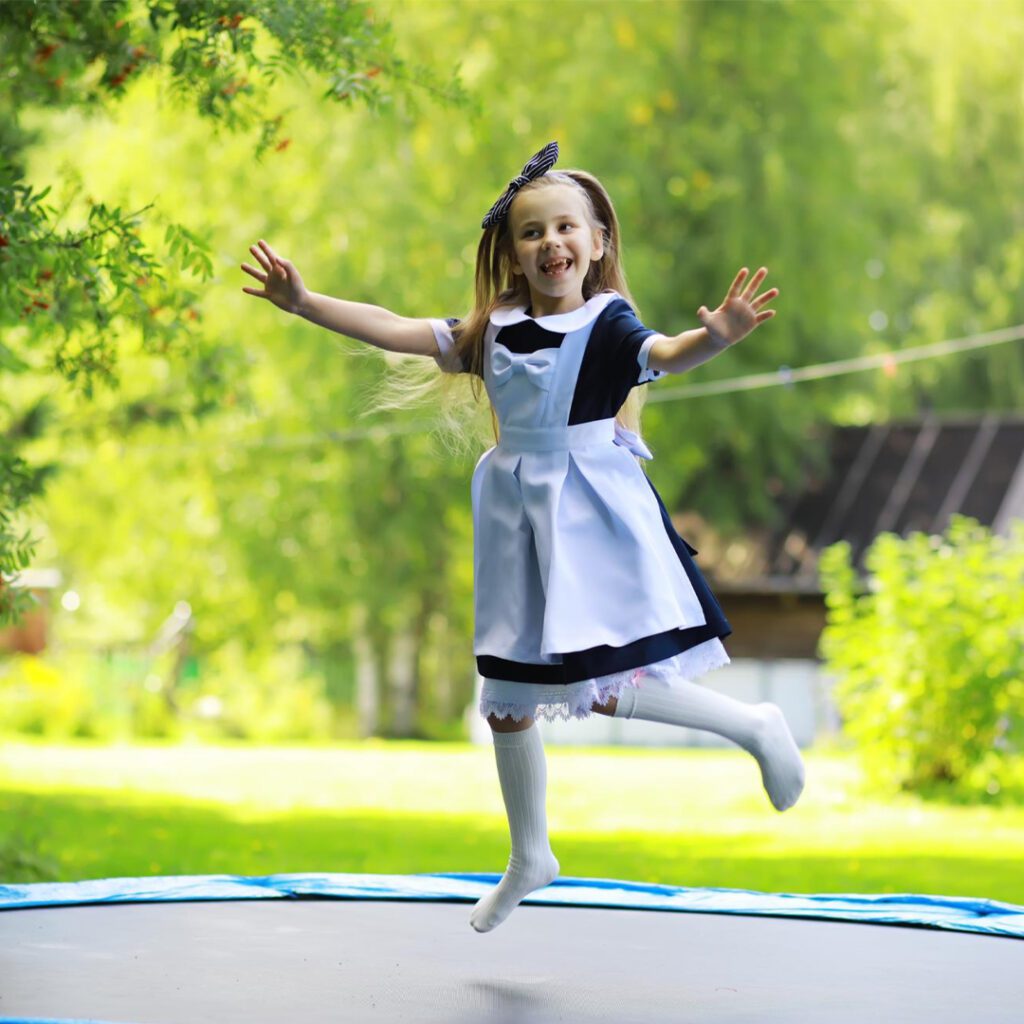
When it comes to trampolining with autistic children, safety should always come first. Ensure proper protective padding covers the springs and frame, and that the family trampoline netting is securely in place. Closely supervise your child at all times and consider using a safety harness, especially when they are first learning. Limit one child on the trampoline at a time, and teach them basic rules like no flips, no jumping into the netting and always land on two feet.
Keep Sessions Short
Start with just 10-15 minutes at a time and build up from there. Shorter sessions will keep your child engaged and less likely to become overstimulated or have a meltdown. Provide clear structure and routine for each session. For example, spend 5 minutes doing simple bounces, 5 minutes playing catch with a therapy ball, and finish with some guided stretches. Finish each session on a high note while your child still wants more.
Make it a Habit
To gain the most benefit from trampolining, aim for 2-3 sessions per week at regular times. This could be directly after school to release pent-up energy, or on weekend mornings as part of their daily routine. Add in sensory elements like playing music during the session or using textured therapy balls and balloons. Provide lots of praise and positive reinforcement to help make trampolining an enjoyable habit and activity they will look forward to each week.
Challenges and Considerations
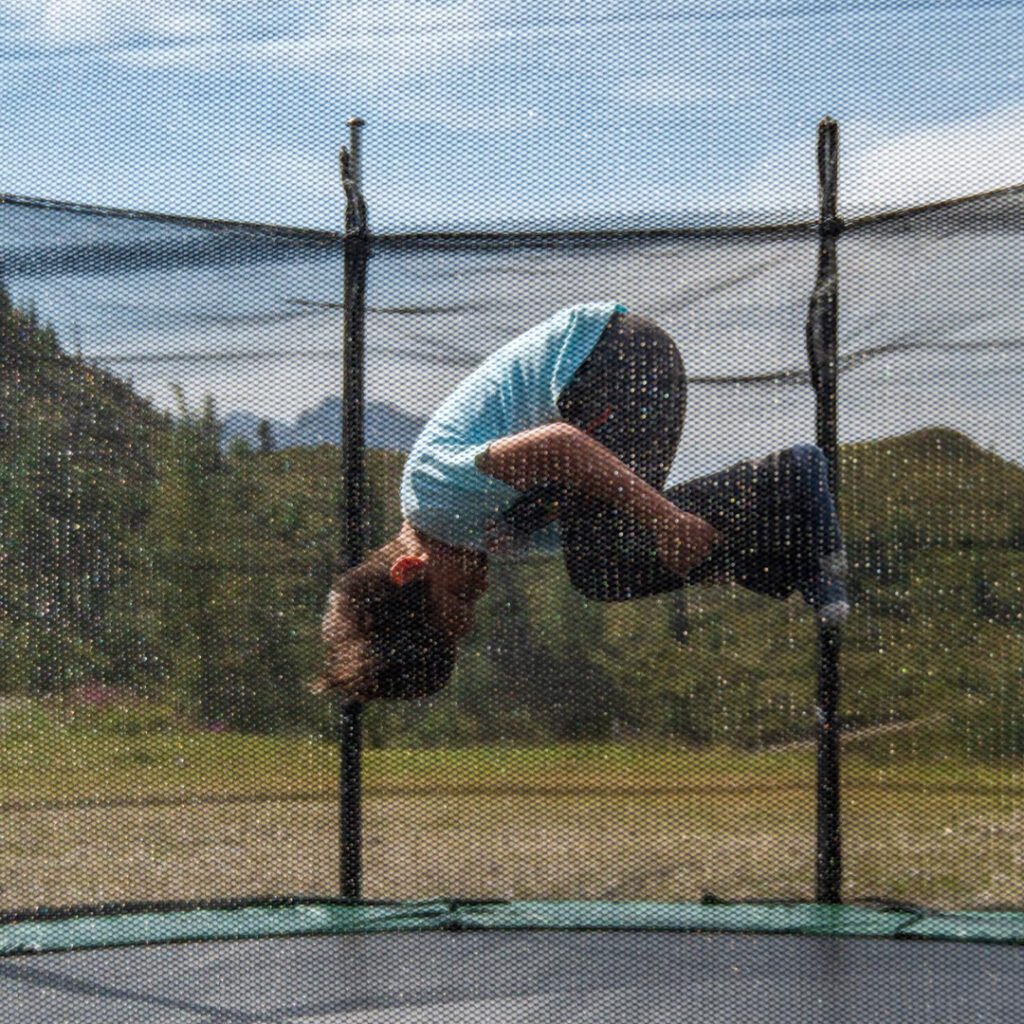
Many parents have understandable concerns about trampolines, especially regarding safety and injury risks. However, with proper precautions and supervision, trampolines can be used safely by children on the autism spectrum. Some common myths are that trampolines can stunt growth or cause permanent damage. There is no evidence to support these claims. As with any physical activity, injuries can happen, but following safety guidelines and ensuring proper padding and netting can minimise risks.
Accessibility and solutions
For children with physical disabilities or mobility issues, accessing a trampoline can present challenges. However, many companies now offer wheelchair ramps, safety harnesses, and other adaptive equipment to make trampolining accessible for all. If cost is a concern, some charities and organisations offer grants for purchasing adaptive recreational equipment. Some trampoline parks also offer specialised sessions for children with additional needs.
Tailoring for individuals
No two children on the spectrum are alike, so trampolining programs should be tailored to each child’s needs, skills, sensitivities and interests. Some children may prefer one-on-one sessions with a therapist or coach at first before joining group sessions. Providing visual schedules, limiting noise and distractions, and allowing extra time for transitions can help make the experience enjoyable for all. favourite toys, music and rewards can also be incorporated to motivate and engage each child.
Conclusion
You know, when you see the sheer joy on an autistic child’s face as they bounce up and down on the family trampoline, it’s clear just how valuable this equipment can be for their development. The stimulation, exercise and sensory relief it provides them is truly uplifting. So if you’re considering getting a trampoline for your own autistic child, it’s likely to be one of the best investments you ever make in their happiness and wellbeing. With the right supervision and safety measures, it can open up a whole new world of fun for them. And that’s something any caring parent would move mountains to provide.





